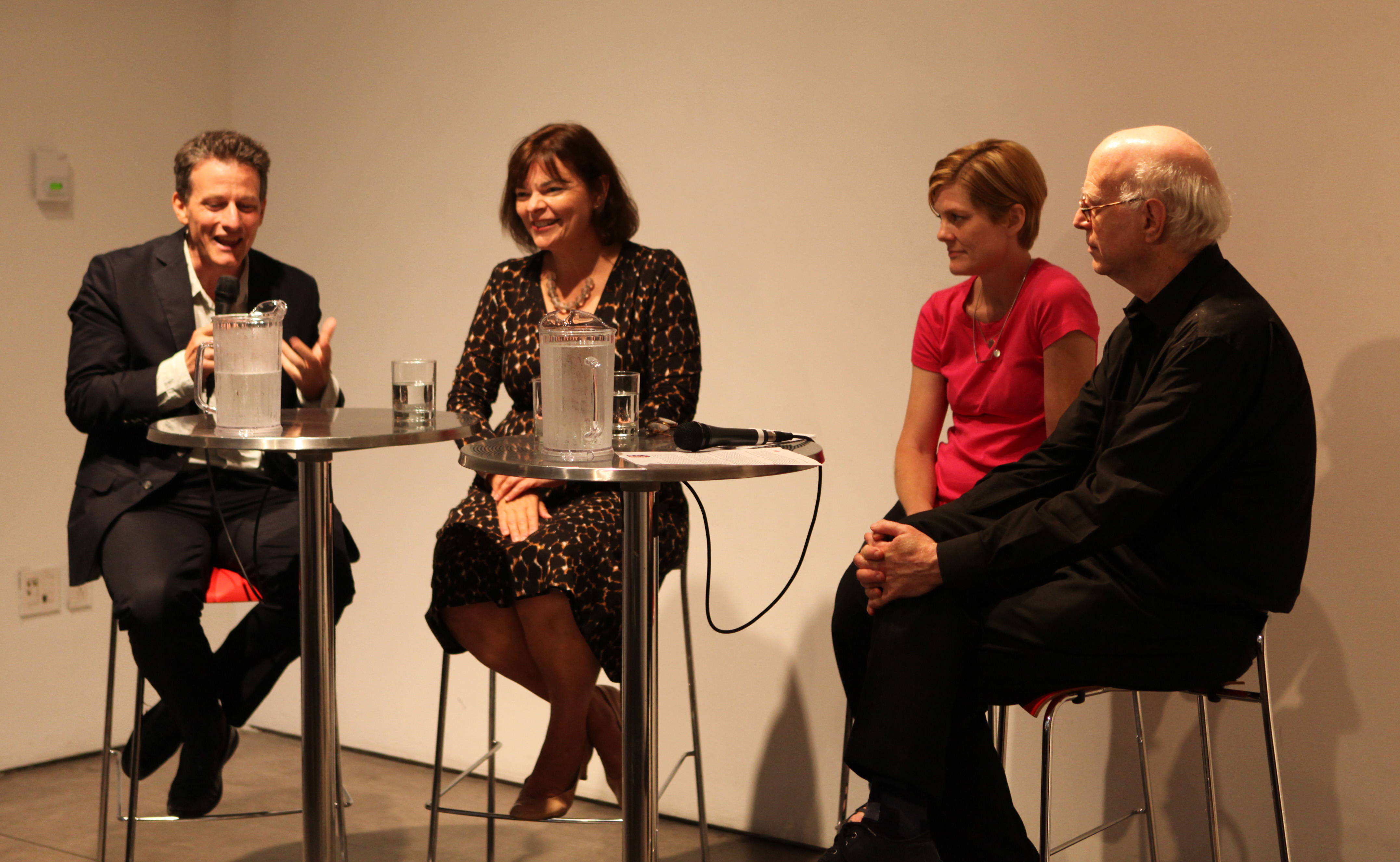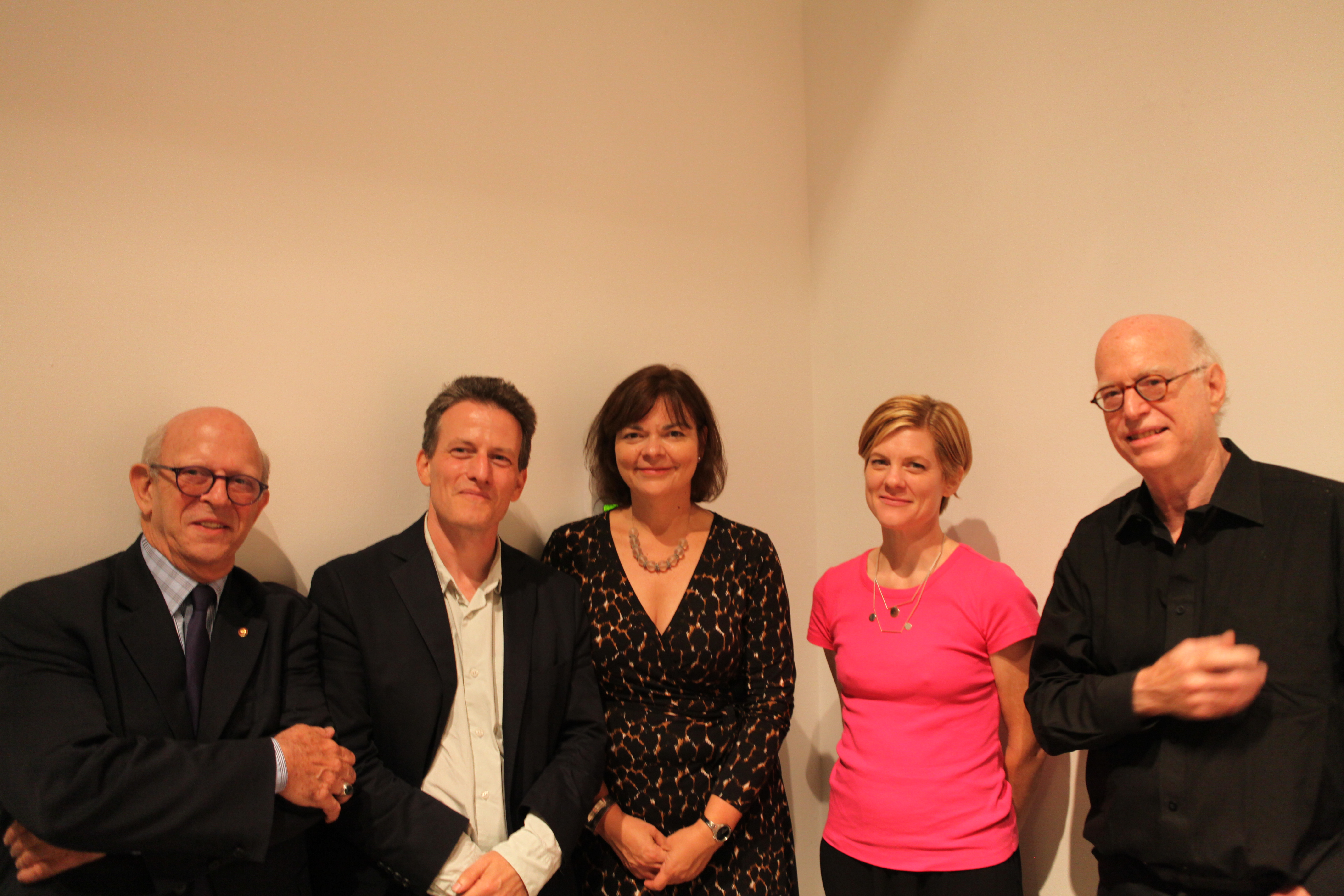by Bill Millard
As a composer understands how to deploy rests, moments of silence, as a backdrop that makes each instrument’s contributions meaningful, urban designers and planners recognize that spaces between buildings are key determinants of behavior, indispensable in bringing life to the entire civic organism. Urban space is never entirely blank, neutral, or empty; it has forms and functions, intentions and unintended consequences, narrative arcs and evolutionary stages, just as buildings do. This gathering of practitioners, scholars, and citizens explored various existing and hypothetical expressions of this aspect of the 2014 Lance Jay Brown, FAIA, presidential theme “Civic Spirit: Civic Vision,” speculating about how conscious placemaking can align underlying principles with practical effects.
New York arguably emphasizes its public spaces more than other cities. Its commitment to one spatial typology in particular, the privately owned public space or POPS, has produced replicable and widely studied models. William H. Whyte’s analysis of how people use the Seagram Building’s plaza in The Social Life of Small Urban Spaces recurred as a conceptual touchstone throughout this discussion, beginning with a case study in the very different conditions of West New Delhi by Suzanne Frazier, AIA. Also multifaceted cases like Zuccotti Park, where the Occupy Wall Street experience is a salient example of both democratic spontaneity and the vulnerability of free expression to forcible suppression in an ambiguously regulated space.
Local contentions over public space may be a more concentrated (and thus more noticeable) form of phenomena that occur more quietly nearly everywhere, in infinite global variations. As public spaces evolve, fleshing out real-world enactments of the core question posed by Susan Silberberg, AIA (“What is placemaking?”), the distinction between spatial design and community organizing begins to look more like a fuzzy continuum, and the specific interests of local cultures may be stronger determinants of a space’s success than the missions consciously built into its design. Silberberg quoted a 1914 political-science convention’s proclamation that ”citizens should show humility in the face of expertise.” A century’s experience with the mistakes of top-down planning renders this a punchline.
Guido Hartray, AIA, set forth three cardinal properties of a good public space: it is a place open to all, a place where we enjoy being together (with exceptions like the subway), and a place we experience interconnection. Genuinely public spaces tend to have “contrary, conflicting programs,” he noted; they offer resistance to even the best of intentions. They often answer multiple needs, as in the Gowanus Green affordable-housing project along the Gowanus Canal (connecting the buildings’ roof designs and recreational areas with swales assisting water treatment in an area prone to combined sewer overflows), or, on a different scale, the sculptural-yet-multifunctional raised storm grates that Marvel Architects’ predecessor firm Rogers Marvel created for the MTA. “No space in the city should just have an infrastructural purpose,” Hartray observed.
Frasier, who has been applying Holly Whyte-style analytics to the Janak Puri District Center Plaza in New Delhi for a documentary in progress, cited numerous parallels but found that the data being collected confounded expectations; robust crowd activity simply wasn’t occurring, and “a lot of the images that we were collecting were starting to look like ruin porn.” Her group’s observations have driven Frasier away from design per se and toward ethnographics and postcolonial discourse. India’s poverty, populousness, pollution, public-sector inefficiencies, and rapid social-structural changes, she observed, make homogeneous Western forms and assumptions irrelevant. Whyte’s work, she commented, remains relevant but is “not relative” to Indian realities. (As an Indian colleague told her with some exasperation, “Urban design is easy in the U.S.”) While noting that the improvisations of Indian “jugaad urbanism,” as heralded in Kanu Agrawal’s superb 2011 exhibition at the Center for Architecture, have gained currency in the West, she expressed concerns about romanticization and appropriation: “We’ve hipsterized it… ‘how great, they’re cobbling together things, they’re sustainable, they’re reusing.’ They desperately need this stuff.”
Moderator Richard Sennett focused attention on “places where strangers meet,” where groups are not overly cohesive and chance discoveries flourish: impersonal spaces like Tahrir Square during the Arab Spring or Zuccotti Park during Occupy. “I’m less interested in Gemeinschaft,” Sennett noted, finding the juxtaposition of different communities valuable even when “they may not necessarily be having a good time by being together. We make differences physically evident to each other; this is another kind of dimension in the public realm, and I think it’s more political than it is communitarian in this kind of pleasurable sense.”
Sennett offered the provocative idea that planners “reverse the logic… that a place should be at the center,” and deliberately place markets, social services, and other gathering points for disadvantaged citizens close to borders with more privileged neighborhoods, compelling different classes to mix and perhaps understand each other better. The case of La Marqueta under the Metro North railway in Spanish Harlem, a cluster of vendors that was opened by Mayor LaGuardia in 1936 and thrived into the 1960s, but has given city officials a chronic relocation challenge since the 1980s, suggests an opportunity for some productive friction: Sennett would put it on 96th Street. Hartray added that the Lower East Side’s Essex Market, already sited in a rapidly changing edge zone, remains vibrant but needs to guard against “getting overwhelmed by its own success.”
“Much public space,” Sennett continued in a later critique of the POPS practice, “is a zone of non-interaction… an appropriation. The plaza is a perverse form of public space, one that doesn’t work the way Holly Whyte said.” An even more egregious and nearly ubiquitous tradeoff squandering public space and public value, he added, is auto parking: “A city that doesn’t have street parking gives public space back to the public. We never think about it as much as we should, but basically, every time we have a parking space, we’ve privatized something which doesn’t belong to that person.” Sennett as analyst/provocateur is operating on levels that are so fundamental that less acute, less daring observers find them invisible. The first step in reclaiming various forms of public space for genuinely public uses, he implies, may be recognizing that there was never anything natural or inevitable about their appropriation for private interests in the first place.
Event: The Future of Public Space
Location: Center for Architecture, 09.05.2014
Speakers: Suzanne Frasier, AIA, Associate Professor, Morgan State University School of Architecture and Planning; Guido Hartray, AIA, Founding Partner, Marvel Architects; Susan Silberberg, AIA, Founder and Managing Director, CivicMoxie LLC, and Lecturer in Urban Design and Planning, MIT Department of Urban Studies and Planning; Richard Sennett, Professor of Sociology, New York University and the London School of Economics and Political Science, and Founder, Theatrum Mundi (moderator)
Organizers: Center for Architecture

